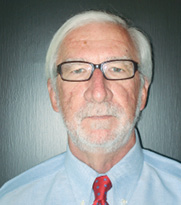Rather than waiting for a potential customer to get a flat tire in front of the dealership or chasing low margin roll-over customers to amp up the dealership’s volume bonus, dealers and sales managers, together with their salesforce, would be far better served developing meaningful and lasting relationships with the overwhelming number of customers that are seeking such a partnership.
Far too many dealers permit their sales personnel to sit inside the dealership under the misbegotten belief that such a presence is necessary to avoid losing a sale. In this day of cell phones and iPads, it is simply ludicrous to believe that a salesperson needs to sit within the dealership waiting for a customer to call in about a piece of advertised equipment either on the Internet or in a trade journal. Similarly, it is ludicrous to have a salesperson, whose primary function should be to make face-to-face contact with existing and potential customers, sitting in the dealership waiting for a potential sale to arrive.
In both instances, either walk-in or call-in customers, they should be informed that the salesperson is out in the territory servicing their customer base and that a salesperson will be back in touch with them, either by phone or in person, within a short period of time. Now, it is up to the dealership person who took the message as well as the applicable salesperson to see that a return call is expeditiously made.
Every salesperson who enjoys sitting in the dealership, and every dealer who permits their salesperson to sit in the dealership, will read the above and remember the one time that a sale was consummated as the result of a walk-in or call-in customer. This is known as rationalization and the statistics simply don’t support the notion that meaningful sales in the capital goods industry are the result of sitting in the dealership. Instead, the salesperson should be charged with the responsibility of establishing and maintaining meaningful relationships with customers that reside within their territory.
The first step in increasing customer share, as outlined in last month’s column, is to segment the customer base and then to establish a call schedule that is based on past and projected equipment sales. Once these two steps are completed, the next step is to implement a series of activities that will facilitate the desired objective. Some of the activities that could, and should, be implemented include the following:
- Maintain frequent contact. This contact should be correlated with their past and projected purchases. The more they purchase, the greater the number of contacts.
- Have a specific objective for each and every sale call. Not every call has to be about selling a piece of equipment. For example, a call could be made to ask for a referral or to invite the customer to an open house. Every call requires an objective.
- Do as many “favors” as possible for the customer.
- Periodically, and unsolicited, send an interesting article that may pertain to the customer’s business or personal hobby. For example, if the customer is interested in antique automobiles, an article appearing in a newspaper or magazine dealing with antique autos should be copied and sent to the customer, either by mail or e-mail, with the inscription: “In case you missed this,” or “Thought you would like this!” The customer immediately thinks that yes, you care about him or her.
- Send appropriate birthday and/or anniversary cards to customer, spouse and children. This will validate the utility of a comprehensive customer profile.
- Offer benefits, other than reduced prices, commensurate with increased purchases. Think frequent flyer program or hotel rewards program.
- Conduct annual product seminars by “invitation only” sponsored by manufacturing personnel.
- Conduct annual training sessions for customer family members and/or customer employees on operational features and benefits as well as safety components.
- Continually encourage customer feedback.
- Develop a positive, enthusiastic personality and always remember that it is the customer who ultimately enables the dealership to meet its payroll obligations.
Increasing an account’s volume and thereby increasing their customer share should be a measurable objective for every equipment salesperson for the following reasons.
- Additional volume should mean additional sales income.
- As volume increases, the probability of customer defection decreases.
- Customer retention is less costly than customer acquisition.
- Customers truly don’t have the time nor the inclination to work with multiple salespersonnel, so they appreciate suggestions on how and why they can consolidate their purchases.
Rather than sitting in the dealership gossiping with other employees while waiting for the phone to ring or for a “miracle” to walk through the door, effective salespeople must make it happen. Salespersonnel interested in pursuing a long-term profitable career in selling capital goods should focus their energy on establishing meaningful relationships with customers that are interested in forging a buyer-seller relationship with a customer-oriented salesperson.






